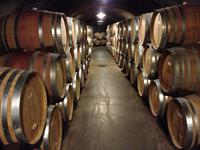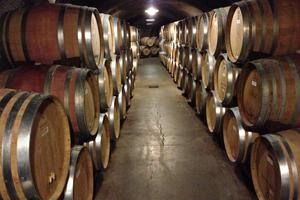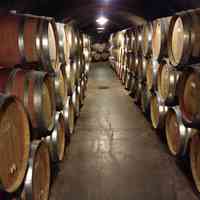An image needs to be uploaded to a namespace.
Namespaces allow to group image types. For example avatars will require different image sizes than product images.
Uploading an image requires a source, which is the URL of the original image.
curl -X POST http://localhost:7000/p?source=http://example.com/image.jpgA binary file might be uploaded instead of providing an URL. The contents of the image need to be included in the body of the request.
> curl --data-binary "@./test/images/wine.jpg" -X POST http://localhost:7000/p
{
"hash": "6e0072682e66287b662827da75b244a3",
"height": 600,
"width": 800,
"content_type": "image/jpeg"
}It is possible to process images when uploading an image by providing the desired image dimensions in the outputs parameter.
> curl --data-binary "@./test/images/wine.jpg" -X POST http://localhost:7000/p?outputs=x300.jpg,x300.webp
{
"hash": "6e0072682e66287b662827da75b244a3",
"height": 496,
"width": 574,
"content_type": "image/jpeg"
}An upload request will block till all images have been created (various sizes) and uploaded (either manta or s3, configured in the app).
The request returns the "Image Information" after an image is uploaded. The response includes properties of the image, and the image hash to be used to retrieve it in the future.
Image properties can be retrieved by visiting the info page. The response is the same as the one returned when creating the image. Please not url has partitioned the image hash /123/456/789/<REST_OF_HASH>/
> curl http://localhost:7000/p/6e0/072/682/e66287b662827da75b244a3/info.json
{
"hash": "6e0072682e66287b662827da75b244a3",
"height": 496,
"width": 574,
"content_type": "image/jpeg"
}Images can be processed on demand. This will re-size and also upload the image to the configured data store!
Dimensions
By Width
GET http://localhost:7000/p/6e0/072/682/e66287b662827da75b244a3/w200.jpg
Square
GET http://localhost:7000/p/6e0/072/682/e66287b662827da75b244a3/x200.jpg
Rectangle (width x height)
GET http://localhost:7000/p/6e0/072/682/e66287b662827da75b244a3/300x200.jpg
Quality
The default compression of the image can be modified by appending -q and the desired quality 1-100.
Square with quality 50
GET http://localhost:7000/p/6e0/072/682/e66287b662827da75b244a3/x200-q30.jpg
Images can be uploaded to either Amazon S3 or Joyent's Manta (we support only one upload config at a time)
To store images in S3 the following flags need to be set
--aws_access_key_id $AWS_ACCESS_KEY_ID --aws_secret_key $AWS_SECRET_KEY --aws_bucket $AWS_BUCKET --aws_region us-west-1For Manta the following flags are required
--manta_url $MANTA_URL --manta_user $MANTA_USER --manta_key_id $MANTA_KEY_ID --sdc_identity $SDC_IDENTITY --remote_base_path $IMG_MANTA_BASE_PATHFew errors will cause the server to return error pages
- Source image is not found: NotFound (404)
Images can be processed with the command line.
Command for manta task:
image --remote_base_path public/images --outputs x300.webp,x300.jpg process $MANTA_INPUT_FILESet up the environment:
mkdir -p $GOPATH/src/github.com/image-server/
git clone https://github.com/image-server/image-server $GOPATH/src/github.com/image-server/image-server
ln -s $GOPATH/src/github.com/image-server/image-server ~/workspace/image-server
cd ~/workspace/image-serverInstall dependencies:
Go needs to be installed with cross compilation. Imagemagick will require giflib and webp support.
On Mac
brew install --force go --with-cc-all
brew install --force giflib
brew install --force imagemagick --with-webp
make depsSet up editor:
- Atom.io package go-plus
Compile the app:
To build the executables under ./bin
make buildThere are few make helpers that start the development server. They all translate environment variables into flags.
Required ENV variables: IMG_OUTPUTS, AWS_BUCKET, IMG_REMOTE_BASE_PATH, IMG_REMOTE_BASE_URL
make dev-server-s3
Required ENV variables: IMG_OUTPUTS, MANTA_URL, MANTA_USER, MANTA_KEY_ID, SDC_IDENTITY, IMG_MANTA_BASE_PATH
make dev-server-manta
Required ENV variables: IMG_OUTPUTS
make dev-serverS3 tests make real HTTP calls when you have S3 ENV variables set.
make tests
All configuration is passed by flags
go run main.go --help
Make sure you increase the version number in core/version.go
make releaseA local cache was not found and the image was processed. This also tracks count of images sent to remote store.
stats.image_server.image_request
In addition, the format is tracked (jpg, gif, webp)
stats.image_server.image_request.jpg
Request failed to return an image
stats.image_server.image_request_fail
Every download from original source, and a 404 was returned
stats.image_server.original_downloaded
The original image is not available, and a 404 was returned
stats.image_server.original_unavailable
The server allows to be profiled when started with the profile flag
bin/images --profile server
The profiling information is available on localhost:6060
It is important to run the profiler
You will need the profiled data from the server, and analize it with the same executable file used on the server.
You will need to download the profiled data from the server.
ssh example.com "curl http://localhost:6060/debug/pprof/heap" > images.pprof
Use go tool pprof to analize the profile. Remember to use the same executable file as the one on production.
go tool pprof --inuse_objects bin/solaris/images images.pprof
Make sure your computer can handle enough simultaneous connections. MacOS X by default allows 128. Need a lot more!
$ sudo sysctl -w kern.ipc.somaxconn=2048Also need to increase the limit of maximum open files
To find out the limits on your computer:
launchctl limitIncrease the limits!
launchctl limit maxfiles 400000 1000000to increase them permanently



